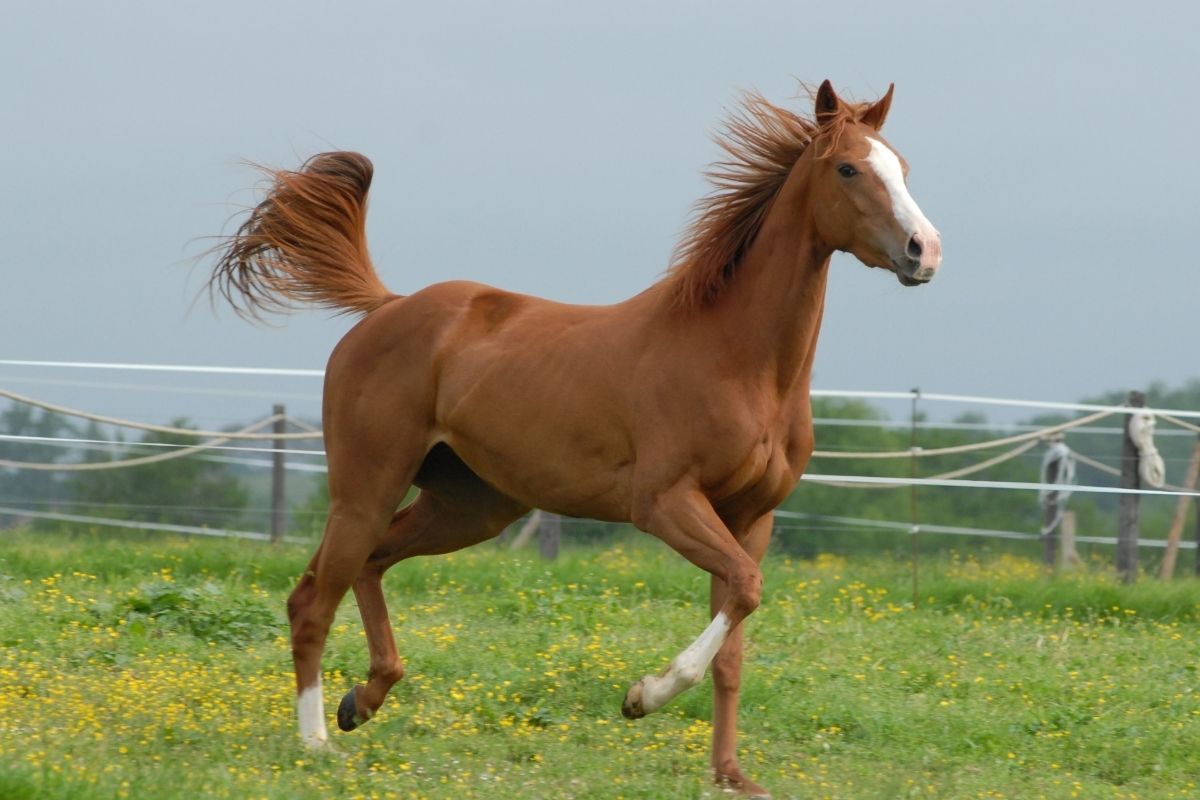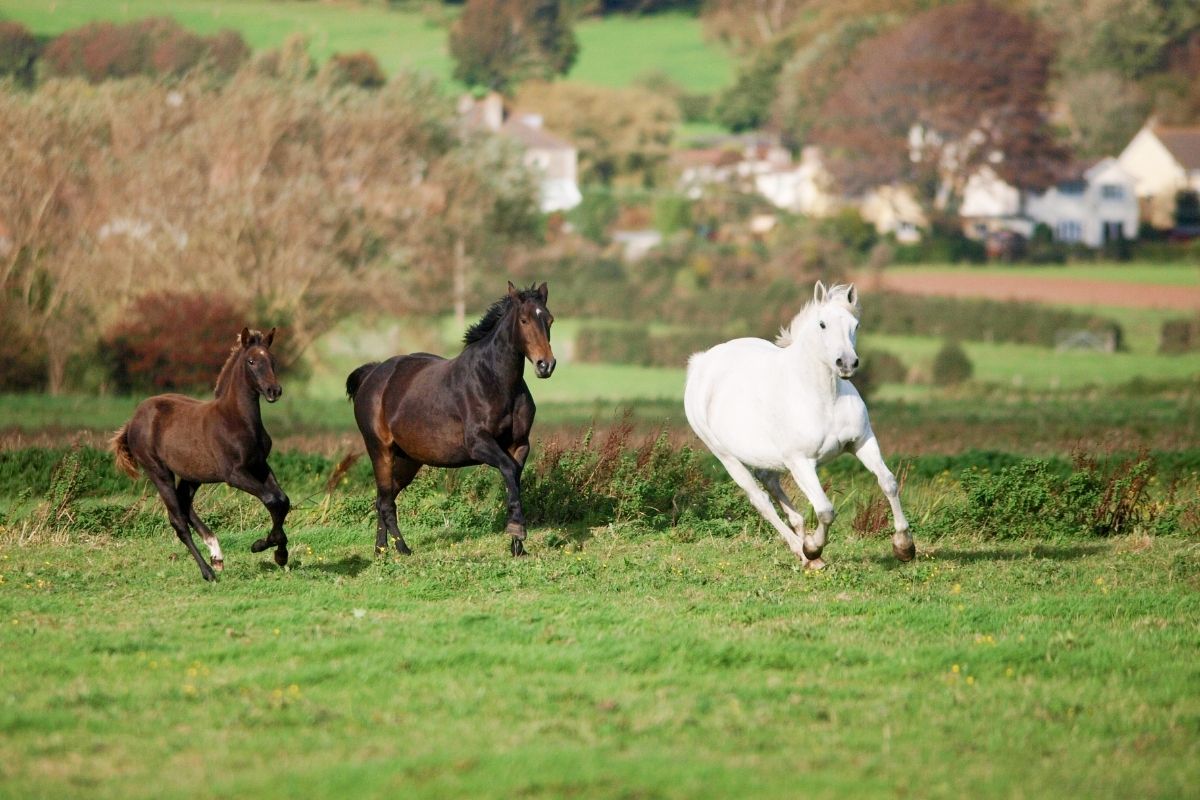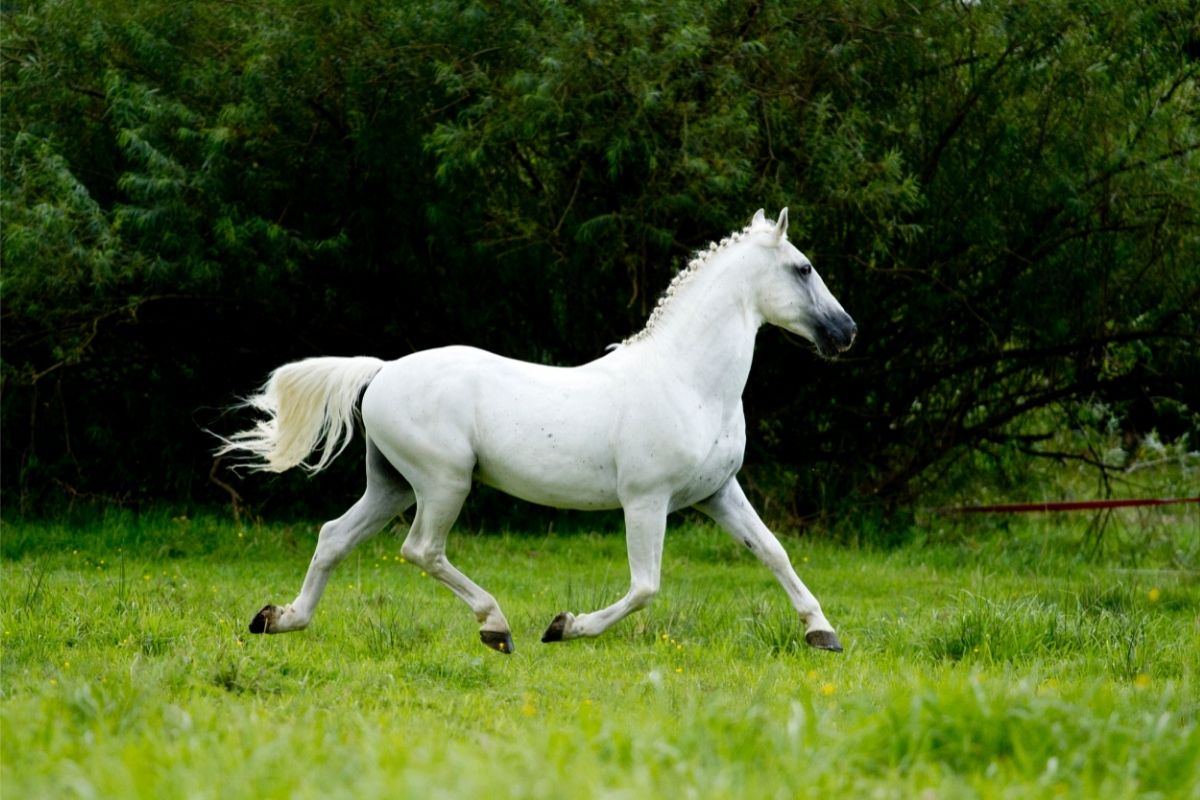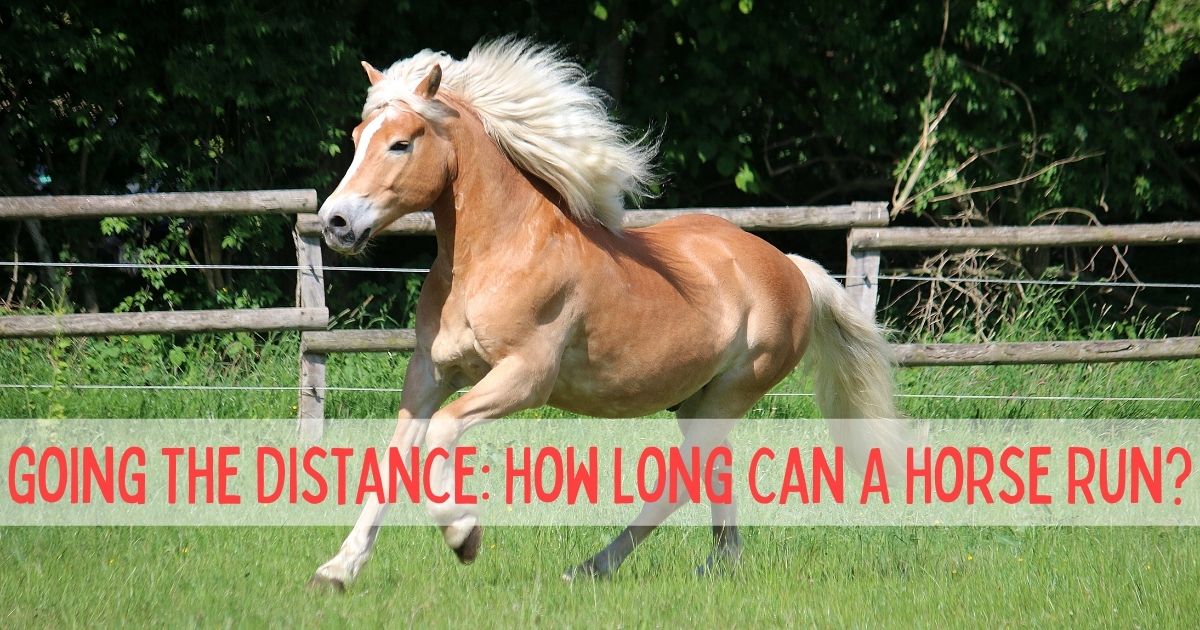When a Horse Runs
How long can a horse run? This question has been here for centuries, and there is no one definitive answer. However, we know that horses can run for hours at a time, and some have even covered over 100 miles (160.9 kilometers) in a single day.
This blog post will discuss the maximum distance a horse can travel before tiring out. We will also look at some factors that affect a horse’s running ability.
So, without further ado, let’s get started.

How Long Can a Horse Run?
Horses are incredibly versatile animals used for everything from farming to transportation to war. They can cover vast distances at high speeds, and their endurance is legendary. As a result, horses were once the primary mode of transportation in many parts of the world.
The average horse can run up to 20 to 25 miles (32 to 40 kilometers) per day, but it can sustain speeds of up to 50 miles (80 kilometers) per hour for short distances. They can also cover great distances; the longest recorded race in history was a competition between two horses that traveled over 100 miles (160.9 kilometers).
When it comes to horse run, there is no one-size-fits-all answer. The distance a horse can run depends on various factors, including the breed of the horse, the terrain, and the weather conditions. However, horses can run for hours if necessary, and we know that they can cover vast distances without stopping.
How Long Can You Ride a Horse?
This is a mind-blowing question, “how long can you ride a horse?”. Your weight and that of the horse determine the length of time you can ride a horse.
If you are riding an average-sized adult male, then it should be able to carry up to 100 pounds (45.4 kilograms) for about eight hours at a slow pace before tiring out; however, this number decreases significantly if there is an elevation change or if the horse is carrying more weight than usual.
If you are riding an endurance horse, it will likely be able to carry up to 150 pounds (68 kilograms) for as long as 16 hours without tiring out. However, this number decreases significantly if there is an elevation change or the horse is not adequately hydrated.
It is vital to consider that a horse run also depends on the terrain and the weather conditions. For example, if you are riding your horse through rough or hilly terrain, it will likely tire out sooner than if you were traveling on a flat surface. Similarly, if it is hot outside, your horse will become tired more quickly than if it is cool and shady.
So, how long can you ride a horse? The answer to this question depends on various factors, including the rider’s weight, the breed of the horse, and the terrain. However, most horses can carry a rider for several hours without tiring out. Just ensure to consider the landscape conditions and be mindful of your horse’s hydration levels.
How Far Can a Horse Gallop?
There are many questions, but how far can a horse gallop?
Its breed and the terrain determine the distance that a horse can gallop. Most horses can gallop for about eight hours, but this number decreases with an elevation change or improper horse hydration.
The average stallion can run up to 30 miles (48.1 kilometers) per hour on flat ground; however, if the terrain is rough or hilly, they may only be able to gallop for a few miles. Similarly, the horse will become tired more quickly if it is hot outside.
How Long Can a Horse Trot?
Horses can trot (travel with two legs on the ground together, alternated with one leg on each side of the horse) for long distances and at a steady pace. It’s an endurance gait, meaning they can keep it up for hours.
They also use this gait to conserve energy when traveling over long distances. This is why you see the horses in the 100-miles (160.9-kilometer) rides at endurance riding competitions trotting along for periods.
However, even though they can trot for long periods, it’s not a smooth gait. The trot is bouncy and bumpy and puts pressure on the horse’s joints and muscles. This means that many riders find it less comfortable than other gaits to ride in for hours at a time.
The speed of the trot also varies.
We can split the speed into three categories:
The Working Trot
The working or everyday trot is slower than a canter. The speed of this gait varies between 13.05 to 16.8 miles per hour (21 to 27 kilometers per hour), depending on the horse’s breed, training level, and fitness.
The Collected Trot
The collected or elevated trot is faster than working but slower than a full-speed gallop. A steady trot can go up to 24.9 miles per hour (40 kilometers per hour).
The Extended Trot
The extended trot is the fastest of the three and usually only comes out in well-trained, fit horses and showing off. A fully extended canter can hit speeds upwards of 34.8 miles per hour (56 kilometers per hour).
Some people have estimated that a horse can trot for over 30 miles (48 kilometers) before needing to rest, but it’s hard to know precisely because many factors influence how long it’ll be able to trot.
Other factors that influence how long a horse can trot include:
- The terrain the horse is riding on: A flat, well-packed surface like a dirt trail or road will be easier to travel on than uneven or rocky ground.
- The weather conditions: If it’s raining or snowing, the horse will have a more challenging time traveling as they’ll have to watch their footing more.
- Suppose the horse is in pain or overly tired from previous training days or work. It would help if you considered so many factors before answering, “how long can a horse trot?”.

How Far Can a Horse Go In a Day?
The distance a horse can go in one day depends on the breed, horse’s fitness level, and what type of gaits they’re using. For example, the average pace for walking is about 3 miles per hour (4.8 kilometers per hour), so, at that rate, a fit and healthy horse could easily walk 15 to 20 miles (24 to 32 kilometers).
But most horses only do a fraction of that in a day, especially if you use them for pleasure riding.
If you ask a horse to do a light jog or trot instead of a walk, they can cover more ground faster. A fit horse and doing a moderate trot could go up to 30 miles (48.3 kilometers). Among the many questions about horses,” how far can a horse go in a day?” is significantly challenging.
How Long Can Horses Run at Full Speed?
The average horse can run at its top speed up to 2 to 3 miles (3.2 to 4.8 kilometers) continuously before it’s exhausted. Many factors influence the distance they can run before getting tired:
- The breed and training level of the horse: Endurance horses can cover longer distances than racehorses as that’s what they’ve been bred for and trained in.
- The horse’s age: As horses get older, they can’t run as far or fast.
- The rider’s weight: A heavily weighted rider will be more challenging for the horse to carry, which will tire them out quicker.
Can you now answer if asked, “ how long can horses run at full speed?”.
How Long Can a Horse Canter?
Cantering is a three-beat gait where the horse’s front legs move together, and their back legs move together. It’s a smooth, comfortable gait that many horses can maintain for long distances without getting tired.
Some people say that a well-conditioned horse can canter for hours without problems. However, like all gaits, the speed of the canter will depend on the horse’s breed and fitness level.
Why Can Horses Run So Far?
The average human can only run for around 30 minutes before taking a break, but wait, how long can a horse run? Horses can keep going for much longer. They can do this because of the different designs of their bodies.
Horses have evolved to run for long distances on very little food and water, making them valuable animals for transportation. They’re also able to deal with large amounts of stress in their muscles that would hurt us if we tried the same kind of physical fitness.
To achieve this level of physical prowess, horses have evolved some particular adaptations to their muscles and body.
Here are a few facts about how horses can run so far:
- They have large hearts that pump blood around the entire body more efficiently than human hearts. In addition, they have lungs that allow them to take deeper breaths while running.
- Horses use gravity to help them move forward by leaning into each stride and using their back legs as springs.
Which Horse Breeds are Bred For Endurance?
There is a specific purpose attached to each horse breed, including endurance. Horses with this trait tend to be smaller in size and may look different from other types of horses. This is due to the selective breeding over time based on their ability to run long distances at speed.
There are two main categories for endurance horses – racehorses and trail or pleasure horses. While both breeds are for endurance, their purposes are quite different.
Racehorses get typically used in competitive events where they cover long distances at high speeds. In contrast, trail or pleasure horses are ridden more casually for recreation over shorter distances.
Endurance is a crucial trait for racehorses, and several different breeds have fit this purpose. The Arabian horse breed is one example of a horse with high endurance levels thanks to its long legs and lightweight body structure.
The Thoroughbred breed, which originated in England, was also developed by breeding horses that could run fast and long distances, making them ideal for racing today.
Trail or pleasure horses are typically not explicitly bred for endurance since they’re ridden slower over shorter distances. Still, some breeds have naturally high levels of this trait due to being used traditionally in equestrian sports like fox hunting.

We’re Out!
So, there you have it! Horses are amazing creatures that can run for long distances without getting tired. But, how long can a horse run? While the average human can only run for a short period, horses have evolved particular adaptations in their body that allow them to cover large distances at speed.
This makes them perfect for transportation or competing in races. In addition, many different horse breeds got selectively bred over time based on their ability to run long distances without getting tired, making them ideal for competitive events like racing and recreational activities such as trail riding.
So if you’re in search of an animal companion who won’t get bored when exploring the great outdoors with you, then look no further than your local horse ranches.
